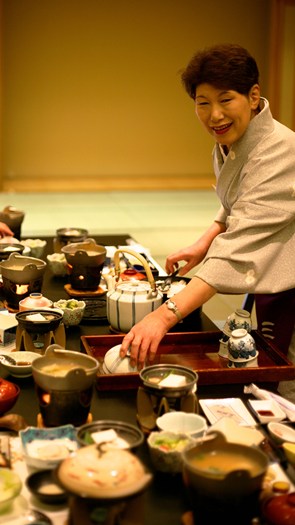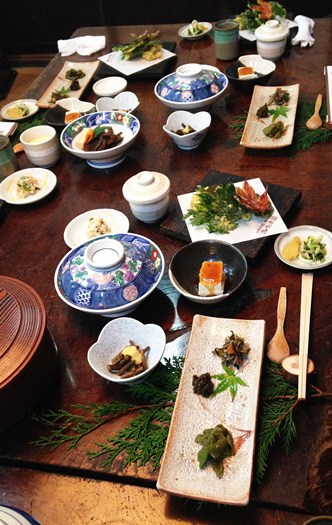TOTTORI - Japan is recognized for having the world’s longest life expectancy, so it is not surprising that its people are slight in stature and often look younger than their years.
On a recent trip to Japan — incidentally my first — it became clear to me that the Japanese lifestyle is conducive to staying slim and aging well. When I returned home, after 10 days, family and friends commented on my healthy glow. I also found that I’d lost 5 pounds, even though I spent the entire trip eating hearty portions of the local cuisine and confectionaries. As I had the good fortune to visit two areas rarely visited by foreigners — Shimane and Tottori — I received a clearer picture of the traditional Japanese diet. Breakfast quickly became my favourite meal. Every morning I enjoyed a variety of small courses which usually included steamed rice, miso soup, tofu, small sheets of nori seaweed, pickled vegetables, egg, and fish. Compare the health benefits of a breakfast like this high in omega fatty acids to a westerner’s standard fare of cereal.


Above: The portions in Japan may be small but the flavours are rich and intense.
No matter where I ate lunch and dinner in Japan, I was usually served up to six teacup-sized portions of different foods, with vegetables forming a large component of every meal. It was truly a tasting adventure. I occasionally had tea and wagashi in the afternoon, a traditional Japanese confectionary made from plant ingredients like mochi and bean paste. Drinks at dinner usually included water, green tea, and small glasses of Sake or plum wine. Dessert was most often fresh fruit. I asked locals if they ate as many dishes in their own homes, and was told meals are often more family style, but yes, they usually included rice, fish, soup, vegetables, and fruit, accompanied by green tea.
In Japan, there is a widely held cultural belief that “food is medicine” and so the foods that form the base of the Japanese diet are rich in vitamins, minerals, and antioxidants. Meals tend to be cooked gently using a variation of techniques such as steaming, pan grilling, sauté, simmer or quick stir fries in a wok.
While the meals tend to be quite light, the Japanese also have an incredible understanding of portion control. Okinawans, from Okinawa island are the longest-living people in Japan and hence the world. They have perfected a calorie-control system that they call “hara hachi bu” translated to mean “eating until you’re 80 per cent full.” The logic behind this tactic is that habitually eating until you’re stuffed will cause your stomach to stretch and therefore require greater quantities of food to achieve satisfaction. The Okinawans’ control tactic not only contributes to overall health, it also keeps them slim. Their average body mass index is only 21.5 compared to the American’s 28.
I never hit the gym in Japan but came home feeling slimmer and fitter. Exercise is part of the Japanese daily ritual. Within a stunning landscape of rolling hills, mountains and glacial lakes, local authorities have helped create a welcome environment for bicycling, hiking and walking with the belief that staying active is important for one’s well-being no matter one’s age.
There is so much to learn from other cultures’ diets and leisure activities and Japan, for me, was an exceptional learning experience. While I don’t always have the time to assemble a perfect bento box, I have changed my eating habits to include a greater variety of foods for each meal, including breakfast. And although I don’t always have an appetite for fish in the morning, on occasion I do include a morsel or two.
About the Author
Gillian was born in raised in Vancouver but has spent the majority of her life living back and forth between Canada and Europe. Her curious nature earned her a degree in Broadcast Journalism at Ryerson University, and brought her to live in Toronto, Paris and Berlin. There has never been a dull day in her career - from from producing documentary series for the Discovery Channel, to working as travel writer, to pursuing her love of food as a private chef and cooking class teacher - this young woman does not believe in limiting your dreams. When she's not busy in her kitchen Gillian can usually be found planning her next adventure!